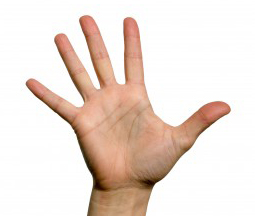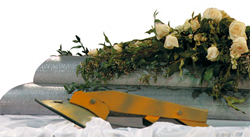5 Ways To Renovate Rather Than Replace Your Trade Show Exhibit
Before you buy a new trade show exhibit, take stock of what you already own and determine if renovation is a better course.
 Rearrange exhibit elements you own to create something new. It is easiest to do this if you own a modular exhibit. But it is possible to switch around parts and pieces of most custom exhibits as well. And don’t forget about unused components that are left over from other old exhibits. Sometimes a combination of parts from two or three booths that have been in storage can be used to create an entirely new booth.
Rearrange exhibit elements you own to create something new. It is easiest to do this if you own a modular exhibit. But it is possible to switch around parts and pieces of most custom exhibits as well. And don’t forget about unused components that are left over from other old exhibits. Sometimes a combination of parts from two or three booths that have been in storage can be used to create an entirely new booth.- Refinish or cover worn booth elements. There are countless exhibit refurbishment options. You can have worn aluminum or metal parts re-anodized or powder coated to make them look brand new or transform them into a new color. Exhibit panels can be re-laminated or re-covered to conceal worn surfaces with other materials. You can even have old display panels covered with magnetic graphics.
- Update hardware and lighting. One of the least expensive ways to update your exhibit is to simply update cabinet hardware and replace outdated light fixtures.
- Update the flooring system. You can purchase a whole new flooring system or remodel your existing flooring to create the impression of newness. A new floor can be anything from new, colorful carpet to adding a raised floor.
- Add a few new elements. The most effective way to refresh an outdated exhibit space is to add a few new components —hanging signs and banner, displays, a conference area, desks, You can even incorporate more elaborate tension-fabric structures to revive your exhibit and give it an up-to-date look.
A few smart, simple changes or additions can quickly and affordably give a tired, outdated exhibit a brand new look.
Staff Your Trade Show Exhibit to Make the Sale!
You’ve done everything brilliantly. Your new trade show exhibit has arrived and is set up. Your product displays are stunning. Your agency put together collateral that will impress your prospects. Everything is set for the show opening — or is it?
 The majority of buyers only attend one or two trade shows a year, and they come to the show planning to make buying decisions. Plan ahead so you have the right team to close the sale.
The majority of buyers only attend one or two trade shows a year, and they come to the show planning to make buying decisions. Plan ahead so you have the right team to close the sale.
Are you properly staffed?
Most people are aware that having a well-trained trade show exhibit staff is one of the keys to trade show success. But it is just as important to be properly staffed.
Make sure you have the right staffing mix at the show. What functions need to be represented? Do you need technical staff or product specialists to support your sales team? Augment your trade show exhibit team with home office staff who are on call and available to answer questions and provide information to key prospects.
Do you have enough staff to cover the booth?
Even in a small trade show exhibit, it is ideal to have at least two people at your booth all the times so that one person is free to leave the booth and interact with attendees as they are walking by. If you are trapped in your booth waiting for them to come to your trade show exhibit, you will miss key prospects.
Make sure your team maximizes downtime
There is a lot of downtime at a trade show. Some experts estimate that as much as 90% of the time exhibitors spend at a trade show is wasted. Organize lead follow-up activities so that they can be done from the exhibit floor during these idle periods. Send out follow-up emails to prospects. Gather information to answer questions from prospects and get these answers to prospects before the show ends. Meet with the press to generate some proactive PR for your company. Have your team communicate trade show news to key prospects who could not attend the show from the trade show floor.
The right team is the essential element
Put the right team in a great trade show exhibit. Give them the training and tools they need to succeed and you will increase your trade show sales.
Trade Show Exhibit Design: Motion Captures Attention
Few exhibitors use motion to draw visitors to their trade show exhibit, and this presents an opportunity for the exhibitors who do make effective use of motion. Impactful motion can be created in 2-D with digital video or interactive displays, or in 3-D with people or other moving objects.
Effective 2-D Motion Techniques
 Trade show floors are loaded with digital display monitors but they are rarely used to create motion. Most often they are used to show videos of products, digital slide shows or other programming that is meant to be watched from a few feet away. This can be an important element of a booth but may not draw someone into your booth.
Trade show floors are loaded with digital display monitors but they are rarely used to create motion. Most often they are used to show videos of products, digital slide shows or other programming that is meant to be watched from a few feet away. This can be an important element of a booth but may not draw someone into your booth.
To attract passersby place displays above head level and in a location that can be seen easily from at least 10 or 20 feet away. Using large display screens or an array of displays can help make a big statement.
If you want to attract people with something moving, the programming is what really matters. Program your display with attention-getting video or graphics. Use large graphic images, bright colors, stark contrast and incorporate motion.
Effective 3-D Motion Techniques
A few exhibitors have created trade show exhibits that incorporate the latest 3-D technology, but most 3-D motion elements used in trade show exhibits are people or objects that are in motion.
People are the most common 3-D motion elements. A product demonstration filled with activity and animated behavior attracts attention. A performer doing any kinetic activity – dancing, juggling, walking on stilts, and so on – can attract large crowds.
The other common 3-D motion elements are physical objects that move. A motion element can include banners, streamers or tension fabric structures that are well above eye level and in motion.
Effective Use of Motion
Motion elements are highly memorable and can leave a lasting impression with trade show attendees. The most effective way to incorporate motion techniques into a trade show booth is to make sure that the moving element reinforces the brand identity and the booth concept. As with every powerful communications tool, integration is essential to success and using motion elements as a gimmick just to attract attention without properly integrating the message can actually undermine your overall efforts.
Used wisely, motion can attract visitors to your trade show exhibit and has the capacity to build awareness and leave a lasting impression of your company and brand.
Putting the Show back into Trade Show Exhibits!
ExhibitorOnline published a case history about a trade show exhibit that brilliantly executed a complete 360 degree trade show exhibit. The exhibit was presented by PayLock LLC, a manufacturer of a self-release car-booting system called the SmartBoot at the International Parking Institute Conference & Expo (IPI) in Las Vegas.
 Since the company’s 2004 launch, PayLock’s president, Cory Marchasin, hoped to snuff out traditional car boots. “My partners and I acquired a car-boot company in 2004, but rather than continue with this traditional technology, we looked for ways to develop a competitive edge and differentiate ourselves from the competition,” Marchasin says. “As part of our creative process to build a better boot, we decided it wasn’t actually the product that needed refining so much as it was the business process itself. Traditional boots and the process associated with them just didn’t seem to make sense anymore.”
Since the company’s 2004 launch, PayLock’s president, Cory Marchasin, hoped to snuff out traditional car boots. “My partners and I acquired a car-boot company in 2004, but rather than continue with this traditional technology, we looked for ways to develop a competitive edge and differentiate ourselves from the competition,” Marchasin says. “As part of our creative process to build a better boot, we decided it wasn’t actually the product that needed refining so much as it was the business process itself. Traditional boots and the process associated with them just didn’t seem to make sense anymore.”
PayLock decided to bury competing products with a funeral-based booth theme. Their exhibit including everything from in-booth caskets to after-hours wakes, PayLock’s “morose strategy used dead-pan humor to rub out the competition — and slay its own expectations in the process.” Here are a few highlights:
- The entire trade show exhibit and program was infused with product messages and tongue-in-cheek tactics to keep the laughs coming.
- Pre-show promotion: An obituary for the traditional boot ran in the show directory, available starting the day before the show opened.
- Two memory boards with images of the traditional boot and the paper permit paid homage to the Smart-Boot’s “deceased” competitors.
- Following the show’s ribbon-cutting ceremony, PayLock pallbearers hoisted the coffins onto their shoulders and led a processional to PayLock’s booth. A five-piece jazz band accompanied the processional, recreating a New Orleans-style funeral march.
- The two coffins were positioned near the back of the exhibit. Monitors above the coffins displayed the time of the next funeral presentation along with whimsical images during the eulogies.
- Tissue boxes, black carpet, and casket sprays adorned the surreal 16-seat in-booth funeral parlor.
- PayLock staffers read the eulogy, which explained the traditional boot’s fate through excerpts from the traditional boot’s journal. Attendees that read pre-scripted eulogies of their own were entered into a drawing for an iPad.
- After the funeral, the bereaved filed past the caskets to pay their respects and collect free T-shirts.
The exhibit was not a hit with competitors, but was very popular with show attendees, and, most importantly, generated a lot of qualified sales leads. The most impressive aspect of this exhibit was how it seamlessly integrated the company’s sales message into an unlikely and memorable branded event.
You can read the entire case history at ExhibitorOnline.com, click here!
Archives
- July 2021
- June 2021
- May 2021
- April 2021
- October 2018
- September 2018
- August 2018
- July 2018
- June 2018
- May 2018
- April 2018
- March 2018
- February 2018
- January 2018
- December 2017
- November 2017
- October 2017
- September 2017
- August 2017
- July 2017
- June 2017
- May 2017
- April 2017
- March 2017
- February 2017
- January 2017
- December 2016
- November 2016
- October 2016
- September 2016
- August 2016
- July 2016
- June 2016
- May 2016
- April 2016
- March 2016
